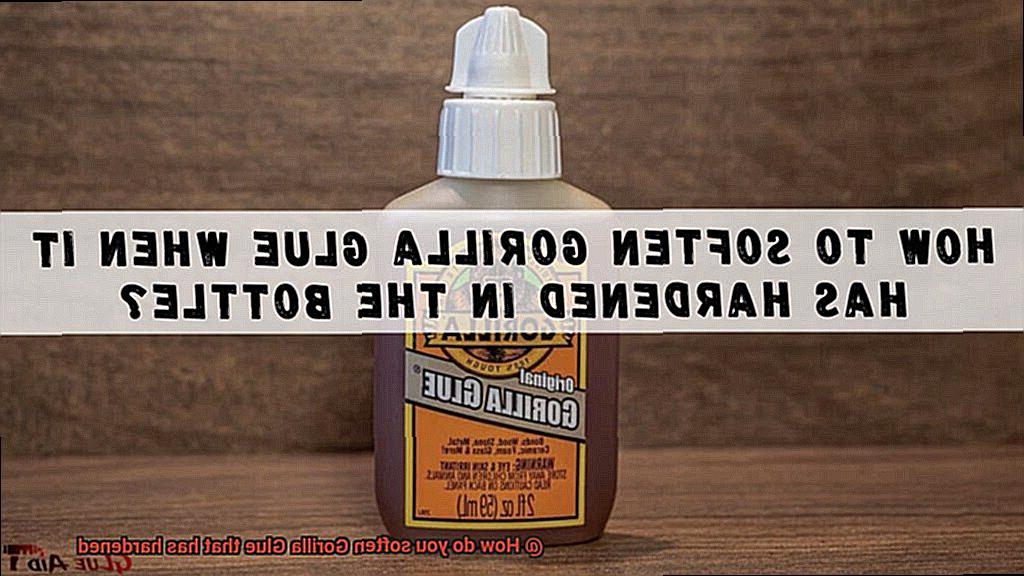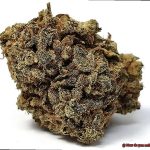Picture this: you’re knee-deep in a DIY project, feeling like a boss, when suddenly, you discover that your Gorilla Glue has turned into a stubborn rock. Cue the frustration and the desperate urge to throw in the towel. But hold on tight, my fellow DIY warriors, because we’ve got just what you need.
In this all-inclusive guide, we’re about to unveil some mind-blowing techniques that will soften hardened Gorilla Glue faster than you can say “sticky situation.” With a pinch of patience and a dash of know-how, you’ll have that adhesive back in action and your project back on track.
From everyday household items to secret weapons from the pros, we’re about to embark on an epic journey through the realm of ingenious solutions for tackling those rock-hard blobs of glue. So roll up those sleeves and get ready to conquer.
What is Gorilla Glue?
Contents
- 1 What is Gorilla Glue?
- 2 How to Soften Hardened Gorilla Glue
- 3 Using Heat to Soften Hardened Gorilla Glue
- 4 Using Acetone to Soften Hardened Gorilla Glue
- 5 Using Rubbing Alcohol to Soften Hardened Gorilla Glue
- 6 Using Vinegar to Soften Hardened Gorilla Glue
- 7 Scraping Off the Hardened Gorilla Glue
- 8 Prevention of Hardening Gorilla Glue
- 9 Conclusion
Gorilla Glue is a powerhouse adhesive that has become a staple in the world of DIY projects and professional applications. With its exceptional strength and durability, this polyurethane-based adhesive is the go-to choice for bonding various materials together. Let’s delve into the characteristics and uses of Gorilla Glue, providing you with all the information you need about this versatile adhesive.
Properties of Gorilla Glue:
- Strong and durable bond: Gorilla Glue is renowned for its ability to create long-lasting bonds. Its polyurethane formulation reacts with moisture to form a strong bond that can withstand heavy loads and resist impact.
- Expansion and gap-filling: One of the unique features of Gorilla Glue is its ability to expand and fill gaps when exposed to moisture. This makes it ideal for bonding uneven surfaces or materials with irregular shapes.
- Waterproof: Gorilla Glue is resistant to water, making it suitable for both indoor and outdoor applications. It can withstand exposure to moisture without losing its adhesive properties.
Types of Gorilla Glue:
- Original Gorilla Glue: This versatile adhesive can bond a wide range of materials, including wood, metal, stone, ceramic, foam, glass, and more. It is the go-to choice for general-purpose applications.
- Gorilla Super Glue: If you need a fast-drying adhesive that forms an instant bond, Gorilla Super Glue is the answer. It is perfect for smaller repairs or projects that require quick results.
- Gorilla Wood Glue: Specifically designed for woodworking projects, this variant provides a strong bond for wood surfaces. It is ideal for furniture repairs, joinery work, and other woodworking applications.
Applications of Gorilla Glue:
- Woodworking: Gorilla Wood Glue is widely used in woodworking for joining pieces of wood together. It provides a strong bond that can withstand the rigors of furniture construction and other woodworking projects.
- Metalworking: Gorilla Glue’s exceptional bonding strength makes it suitable for metalworking applications. It can be used to bond metal components or repair metal objects.
- DIY projects: Whether you are working on a home improvement project or crafting a unique creation, Gorilla Glue is a valuable tool to have in your arsenal. Its versatility allows it to bond a wide range of materials, making it suitable for various DIY applications.
Tips for using Gorilla Glue:
- Clean and dry surfaces: Before applying Gorilla Glue, ensure that the surfaces to be bonded are clean and dry. This will ensure optimal adhesion.
- Dampen one surface: Prior to applying the glue, dampen one surface with water. This activates the glue and promotes a stronger bond.
- Use sparingly: Gorilla Glue expands as it dries, so it is essential to use it sparingly. Applying too much can lead to excess expansion and messiness.
- Clamp or hold bonded surfaces: To ensure a secure bond, clamp or hold the bonded surfaces together until the glue has fully cured.
- Store properly: To prevent Gorilla Glue from hardening, always seal the container tightly after each use and store it in a cool, dry place.
How to Soften Hardened Gorilla Glue
Gorilla Glue is one tough adhesive. It’s known for its incredible strength and durability. But what do you do when it hardens and becomes stubborn to remove? Don’t worry, we’ve got you covered. In this article, we’ll explore different methods to soften hardened Gorilla Glue effectively.
Method 1: Applying Heat
Heat is a simple yet effective way to soften hardened Gorilla Glue. Grab your hairdryer or heat gun and put it on a low setting. Gently warm up the glued area by moving the heat source back and forth. The heat breaks down the glue’s molecular structure, making it easier to remove. Just be careful not to use too much heat, as it can damage the surface or surrounding materials.
Method 2: Using Acetone or Nail Polish Remover
Acetone is a powerful solvent that can dissolve Gorilla Glue. Soak a cotton ball or cloth in acetone and place it over the hardened glue. Let it sit for a few minutes to allow the acetone to penetrate the glue. Then, gently rub the softened glue with a clean cloth or sponge until it starts to loosen. Remember to work in a well-ventilated area and wear gloves for safety.
If you don’t have acetone, you can try using rubbing alcohol or isopropyl alcohol instead. Apply some alcohol onto a cloth or cotton ball and dab it onto the hardened glue. Let it sit for a few minutes before gently rubbing the softened glue away.
Method 3: Mechanical Means
For thicker or more stubborn layers of hardened Gorilla Glue, you may need to use mechanical means. Grab a scraper or putty knife and carefully scrape off the hardened glue from the surface. Be cautious not to damage the underlying material while doing so. The softened glue from previous methods might make this process easier, but it may still require some effort and patience.
Method 4: Soaking in Warm Soapy Water
In some cases, soaking the glued area in warm soapy water can also help soften Gorilla Glue. Fill a container or basin with warm water and add a few drops of dish soap. Place the glued object or affected area in the soapy water and let it soak for several hours or overnight. The warm water and soap will gradually break down the glue, making it easier to remove. After soaking, use a cloth or sponge to gently rub away the softened glue.
Remember…
Not all methods may work effectively on every surface or material. Before attempting any method to soften Gorilla Glue, it’s always recommended to test it on a small, inconspicuous area first to ensure it doesn’t cause any damage or discoloration.
Additionally, follow the safety precautions mentioned for each method. Some solvents like acetone or alcohol can be flammable or harmful if used improperly. Always work in a well-ventilated area, wear protective gloves, and read the instructions and warnings provided by the manufacturer.
Using Heat to Soften Hardened Gorilla Glue
We have all encountered the formidable force that is Gorilla Glue – its unparalleled strength and durability make it the go-to adhesive for tough bonding tasks. But what do you do when you find yourself facing a hardened glob of Gorilla Glue that just won’t budge? Fear not, my friends, for today we shall delve into the world of using heat to soften this stubborn substance and make it more manageable.
Now, before we embark on this quest, let us acknowledge that heat is the secret weapon in our battle. It possesses the power to dismantle the molecular structure of Gorilla Glue, transforming it into a more pliable state. However, like any extraordinary ability, it must be wielded with care and caution. So, let us explore a range of methods that will allow us to harness the power of heat and conquer the challenge of hardened Gorilla Glue.
- Hairdryer or Heat Gun: One straightforward approach involves using a trusty hairdryer or heat gun to direct hot air onto the hardened glue. The gentle warmth will coax the glue into softening, enabling you to scrape or peel it off with ease. Begin with low heat and gradually increase if necessary to avoid any harm to the surface or surrounding materials.
- Hot Water Soak: If you possess an object that can withstand immersion without sustaining damage, consider submerging it in hot water. The gradual infusion of heat will tenderize the glue, making it easier to remove. This method works wonders for smaller objects or sections of glue that require a touch of extra TLC.
- Heat Gun Precision: For larger or more obstinate areas of hardened Gorilla Glue, a heat gun becomes your greatest ally. Its concentrated heat may be precisely directed at specific spots, allowing for an even more meticulous softening of the adhesive. Exercise caution, however, as burns and surface damage could ensue if not handled with care. Remember, safety is paramount.
- Combining Heat and Mechanical Force: Sometimes, heat alone cannot triumph over the unyielding grip of hardened Gorilla Glue. In such cases, apply heat first, then employ a scraper or blunt tool to gently pry off the softened adhesive. Exercise caution to prevent any harm to the underlying surface – we seek only to repair, not exacerbate the situation.
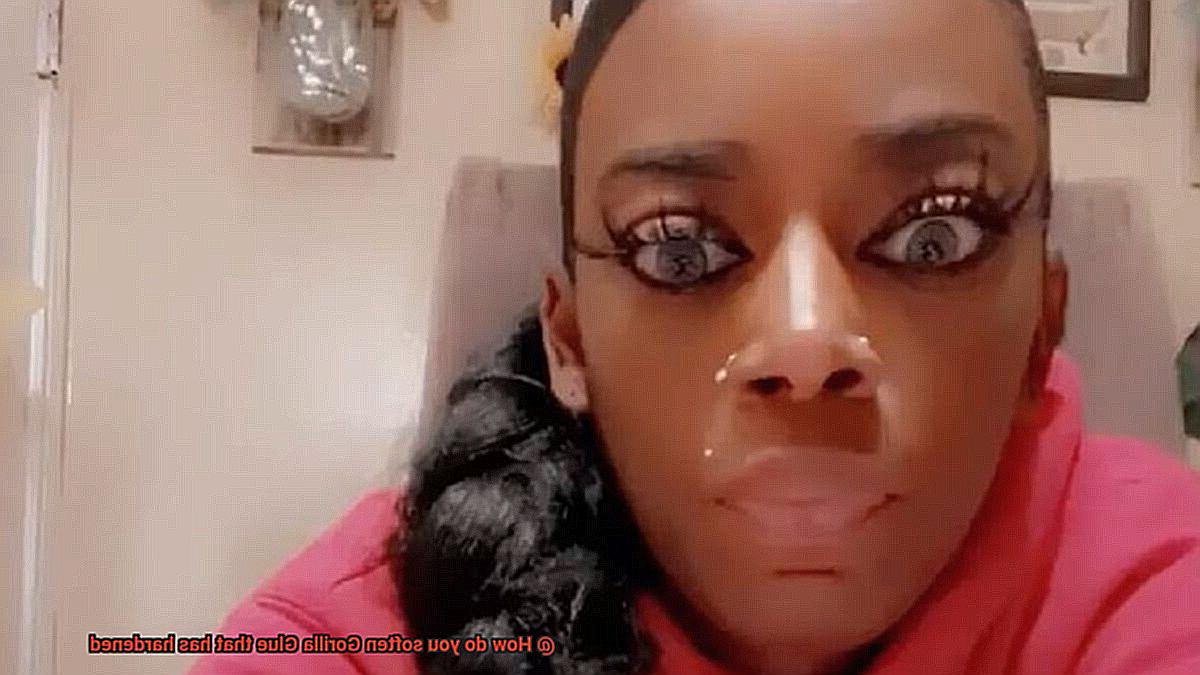
It is important to note, my glue-loving comrades, that heat may not always be suitable for all surfaces or materials. Delicate or sensitive materials can suffer damage from excessive heat, necessitating alternative methods. Always exercise prudence and consider other options when needed.
Once you have successfully softened and removed that hardened Gorilla Glue, take a moment to congratulate yourself on a job well done. But do not rest on your laurels – devote some time to thoroughly cleaning the surface and eradicating any lingering residue. A mild solvent or adhesive remover should prove effective in this endeavor.
Using Acetone to Soften Hardened Gorilla Glue
We’ve all been there – a small mishap during a DIY project or a craft gone wrong, leaving us with hardened Gorilla Glue that seems impossible to remove. But fear not. In this comprehensive guide, we will explore the amazing powers of acetone and how it can help soften and remove hardened Gorilla Glue, allowing you to reclaim your surfaces and move forward with your project. So, put on your DIY gloves and let’s dive into the world of acetone.
Step 1: Prioritize Safety
Safety should always be our top priority when working with any chemicals. Before we embark on this adventure, make sure you have proper ventilation in your workspace. Wear protective gloves and goggles to shield yourself from any potential skin or eye irritation. Remember, safety first, warriors.
Step 2: Applying Acetone
Now that we’re geared up, it’s time to tackle that hardened Gorilla Glue. Dip a cloth or cotton swab into a small amount of acetone and gently dab it onto the glued area. Allow the acetone to sit for a few minutes, giving it time to penetrate and soften the adhesive.
Step 3: Gentle Removal
After giving the acetone some time to work its magic, it’s time to remove the softened Gorilla Glue. Grab a plastic scraper or use your fingernail (carefully.) to gently scrape off the glue. Be cautious not to scratch or damage the surface underneath.
Step 4: Persistence is Key
If the glue doesn’t come off easily, don’t lose hope. Apply more acetone and let it sit for a few more minutes before attempting to remove the glue again. Persistence is key in this battle against hardened adhesive.
Step 5: Cleanse the Surface
Once you’ve successfully removed the softened Gorilla Glue, it’s important to clean the area thoroughly. Use soap and water to eliminate any remaining residue or acetone. This step ensures a clean surface ready for your next project.
Using Rubbing Alcohol to Soften Hardened Gorilla Glue
I have the solution to soften that stubborn adhesive and set you free. Enter rubbing alcohol, your knight in shining armor.
Rubbing alcohol is a common household item known for its ability to break down tough substances. When Gorilla Glue hardens, it becomes as tough as nails. But fear not, for rubbing alcohol will come to our rescue.
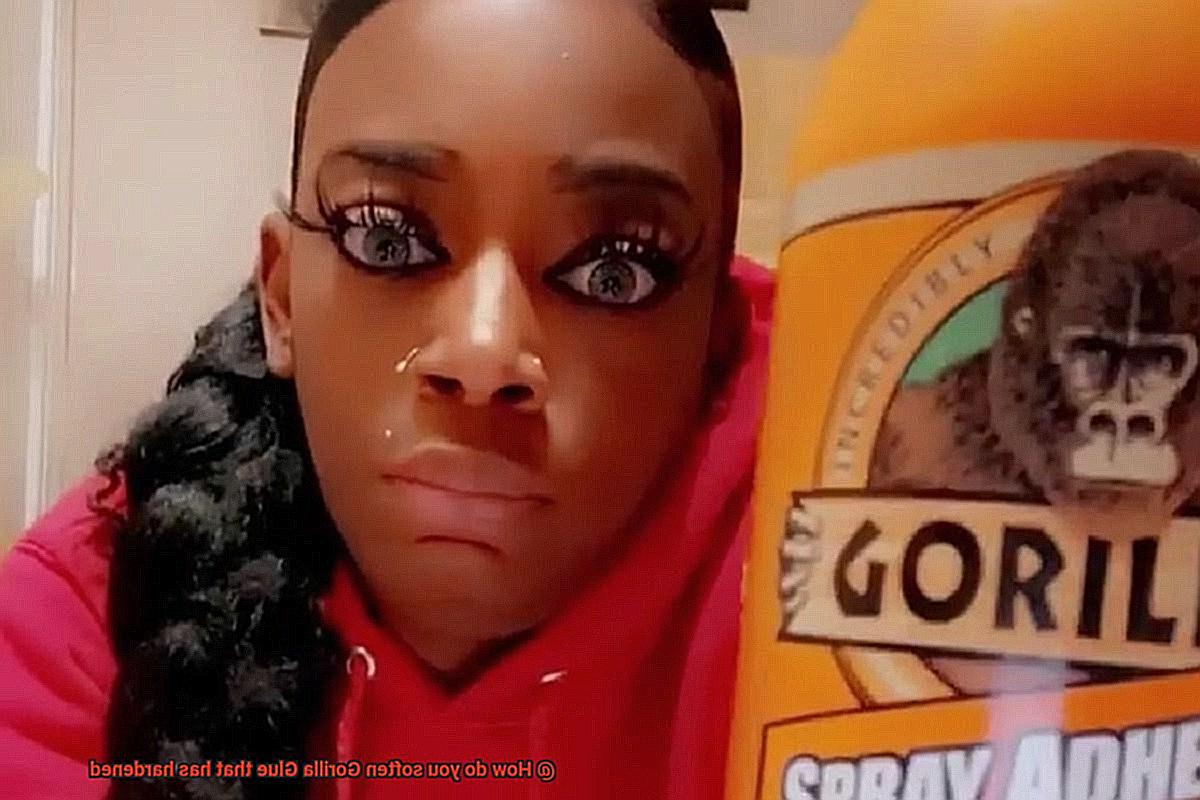
To begin our epic adventure, gather your research notes. First, apply a generous amount of rubbing alcohol onto the hardened glue, saturating the entire area. Picture yourself as a master potion maker, carefully applying the magic elixir.
Next, let the rubbing alcohol work its magic. Allow it to sit on the glue for a few minutes, giving it time to penetrate and loosen the adhesive. Patience is key in this quest.
Once the time is up, grab your trusty scraper or plastic putty knife and gently scrape away the softened glue. Take it slow and steady, defeating the glue without causing any collateral damage.
If the glue proves formidable, don’t lose hope. Repeat the process multiple times, applying more rubbing alcohol as needed. Persistence will pay off.
Before embarking on this heroic journey, test a small area with rubbing alcohol to ensure no damage or discoloration occurs. Safety first. Don protective gloves and work in a well-ventilated area.
Once the Gorilla Glue is softened and removed, clean the area with soap and water to remove any residue from the rubbing alcohol. You’ll be left with a surface as good as new.
While rubbing alcohol is a powerful ally, other methods can also soften Gorilla Glue. Heat can be used with caution and following manufacturer instructions.
Using Vinegar to Soften Hardened Gorilla Glue
In this guide, we will explore the power of vinegar in softening and removing hardened Gorilla Glue. With its acidic properties, vinegar can break down the chemical bonds in the glue, making it easier to remove. Let’s dive into the step-by-step process of using vinegar to soften hardened Gorilla Glue.
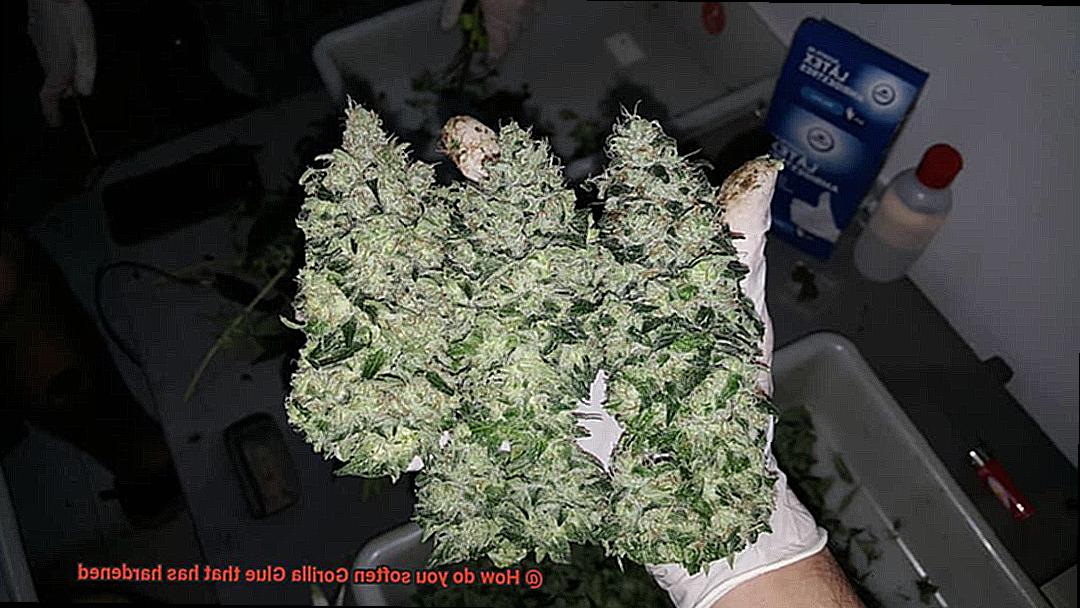
Step 1: Gather Your Materials:

To begin, you will need a clean cloth or sponge and a bottle of white vinegar. These simple tools will be your secret weapons in the battle against hardened adhesive.
Step 2: Apply Vinegar:
Dampen the cloth or sponge with vinegar and apply it directly to the hardened Gorilla Glue. The acetic acid in vinegar begins to work its magic, breaking down the stubborn chemical bonds within the glue.
Step 3: Give It Time:
Allow the vinegar to sit on the glue for approximately 15 minutes. This gives it enough time to penetrate and soften the adhesive. Patience is key here, as rushing may result in less effective results.
Step 4: Gentle Removal:
Once the vinegar has had time to work, grab a scraper or a blunt knife and gently scrape away the softened glue. Take care not to apply excessive pressure, as this can damage the surface beneath.
Step 5: Repeat if Needed:
For any remaining remnants of hardened glue, repeat the process by applying more vinegar and giving it extra time to work its charm. Persistence is key when dealing with stubborn adhesive.
Step 6: Rinse and Dry:
When all traces of glue have been banished, rinse the area with water and wipe it dry. You’ll be left with a clean and adhesive-free surface.
Scraping Off the Hardened Gorilla Glue
We’ve all faced the stubborn challenge of hardened Gorilla Glue that refuses to budge. But fear not, because today we’re arming you with the knowledge and techniques to scrape off that tenacious adhesive and restore your surfaces to their former glory. Get ready to wield your plastic scrapers and putty knives as we embark on a triumphant quest against hardened Gorilla Glue.
Step 1: Prepare and Protect
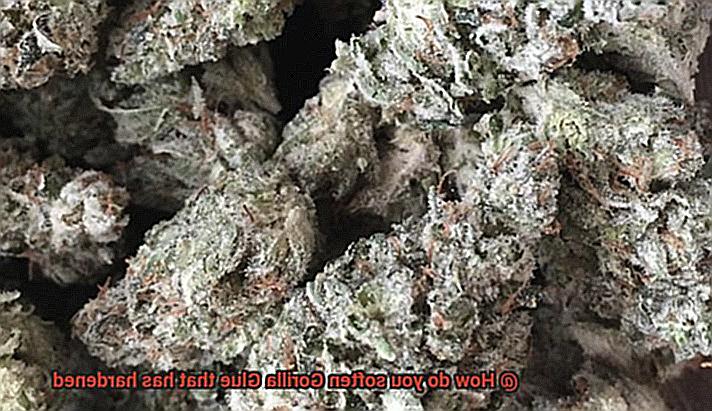
Before diving into battle, shield your surface from potential scratches or damage. Lay down a protective barrier like a plastic drop cloth or old newspaper.
Step 2: Heat It Up
Harness the power of heat to soften hardened Gorilla Glue. Focus your trusty hairdryer or heat gun on one small area at a time. Watch in awe as the heat works its magic, rendering the glue more pliable and easier to scrape off. Remember, test a hidden area first and adjust the heat accordingly – we don’t want any unintended consequences.
Step 3: Adhesive Remover to the Rescue
When heat alone doesn’t do the trick, it’s time to bring out the heavy artillery – adhesive removers. Seek out commercial products designed specifically for tackling strong adhesives or glues. Apply the remover directly onto the hardened glue, allowing it a few minutes to work its magic. Then, with your plastic scraper or putty knife, gently scrape away the softened glue.
Step 4: Household Heroes
No adhesive remover? No problem. Raid your kitchen or bathroom cabinet for household heroes like rubbing alcohol, acetone (nail polish remover), or even vinegar. Soak a cloth or sponge in one of these substances, apply it directly to the hardened glue, and let it sit for a few minutes. Witness the magic of chemistry as the glue softens, making it a breeze to scrape off.
Step 5: Scrape with Care
As you approach the moment of truth – scraping off the glue – adopt the demeanor of a skilled surgeon. Exercise patience and gentleness as you delicately work at the edges of the glue, gradually lifting it away from the surface. Avoid excessive force or sharp metal tools that could mar your precious surface. Remember, slow and steady wins this race.
Step 6: Smooth It Out
Once the majority of the glue has been vanquished, you may encounter stubborn residue. Enter fine-grit sandpaper like a trusty sidekick, gently smoothing out any lingering traces. Handle with care to avoid leaving behind unsightly scratches – our goal is to restore surfaces to their former glory.
Step 7: Clean Up Time
After your victorious battle against hardened Gorilla Glue, don’t forget to cleanse the battlefield with warm soapy water. This final step will remove any residue from adhesive removers or solvents, leaving your surface pristine and adhesive-free.
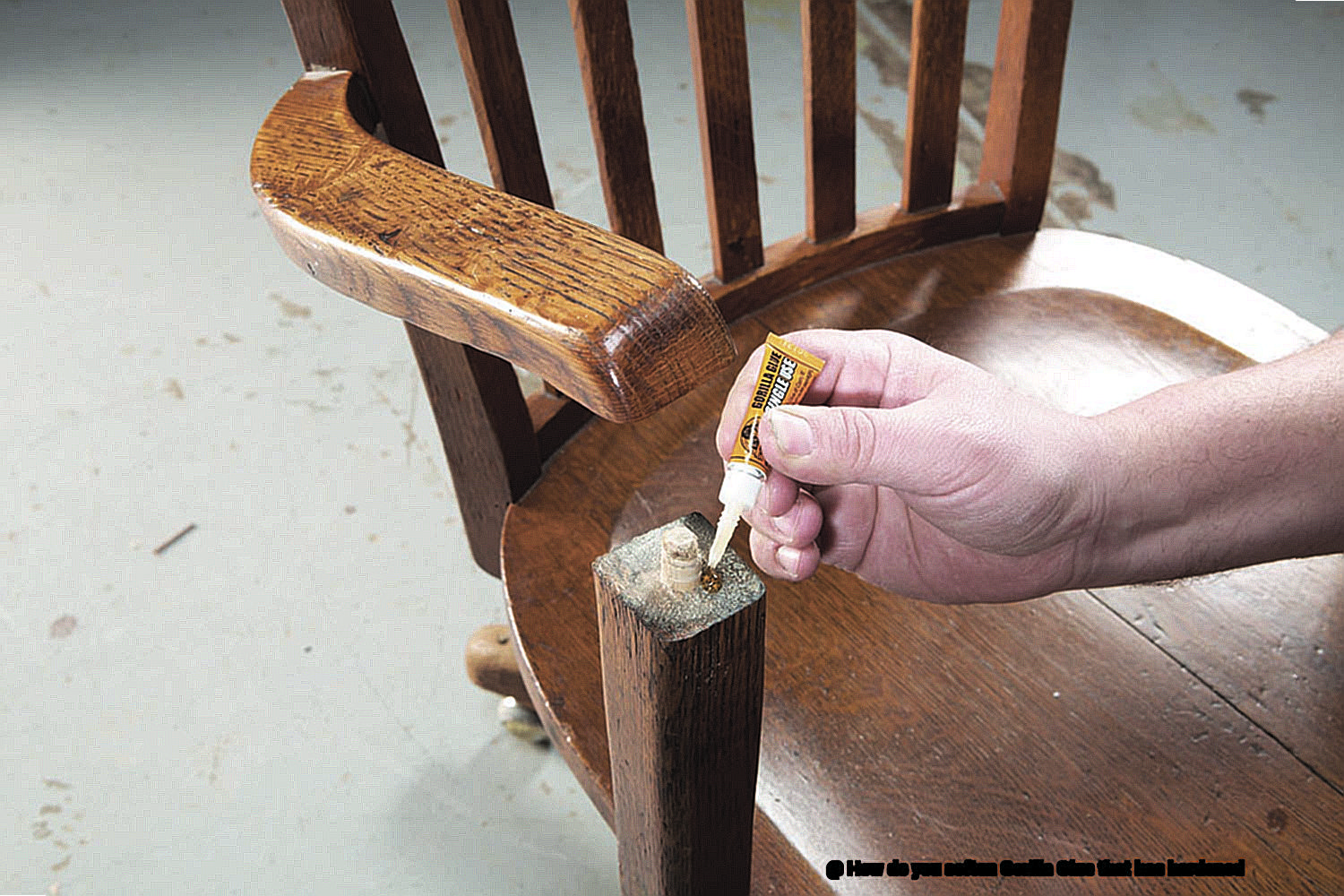
Prevention of Hardening Gorilla Glue
Gorilla Glue is renowned for its unbeatable strength and durability, making it a go-to adhesive for various projects. However, to ensure its continued effectiveness, proper care and attention are essential. In this blog post, we will delve into preventive measures that can be taken to keep your Gorilla Glue fluid and ready for action when you need it most.
Proper Storage:
Storing Gorilla Glue correctly is the first line of defense against premature hardening. Find a cool, dry place away from direct sunlight and extreme temperatures. Keep it in its original container with the cap tightly sealed to minimize air exposure. This will help preserve its viscosity and extend its shelf life.
Plan Ahead:
Unsealing the glue unnecessarily exposes it to air, initiating the hardening process. To prevent this, plan your project in advance and gather all the necessary materials before opening the glue. By minimizing exposure to air, you can reduce the chances of premature hardening.
Clean and Dry Surfaces:
Moisture can activate the curing process of Gorilla Glue, leading to premature hardening. Ensure that the surface you are bonding is clean and free from moisture or contaminants before applying the adhesive. Wipe away any dirt or grease and dry the surface thoroughly. A dry surface will help maintain the glue’s fluidity, ensuring a strong bond.
Apply the Right Amount:
Using too much glue can result in excess squeeze-out that hardens and creates a mess. On the other hand, using too little glue may lead to a weak bond. Follow the manufacturer’s instructions regarding the recommended amount of glue to use for optimal results. This will help achieve a balanced application and prevent wastage.
Check Expiration Dates:
Like any other product, Gorilla Glue has a shelf life. Over time, it may thicken or become less effective, increasing the likelihood of premature hardening. Always check the expiration date before using the adhesive and opt for fresh glue whenever possible. Using recently manufactured glue will ensure its optimal performance and reduce the risk of hardening.
Clean Nozzle/Applicator Tip:
If you have any leftover glue after a project, clean the nozzle or applicator tip before sealing it tightly. This simple step prevents dried glue from clogging the tip and ensures that the remaining glue stays in good condition for future use. A clean applicator will also make it easier to dispense the glue accurately during your next project.
oZWgLLJl2B4″ >
Conclusion
If you find yourself in a sticky situation with hardened Gorilla Glue, fear not. There are ways to soften this formidable adhesive and reclaim your sanity. Don’t let the rock-hard consistency of Gorilla Glue intimidate you; with a few simple steps, you can bring it back to its pliable state. So, let’s dive into the world of glue softening techniques and discover how to tackle this challenge head-on.
One method to soften Gorilla Glue is by using heat. Heat can work wonders in loosening the grip of this stubborn adhesive. You can try applying a hairdryer or heat gun to the hardened glue, directing the hot air towards it. The heat will help break down the glue’s molecular structure, making it more malleable and easier to remove.
Another approach involves using solvents. Acetone, commonly found in nail polish removers, is known for its ability to dissolve Gorilla Glue. Apply a generous amount of acetone onto the hardened glue and let it sit for a while. The solvent will gradually penetrate the adhesive, softening it from within. Once softened, you can gently scrape away the glue with a plastic scraper or your fingernails.
For those who prefer natural alternatives, vinegar can come to the rescue. Vinegar contains acetic acid, which has mild adhesive-dissolving properties. Soak a cloth or sponge in vinegar and place it over the hardened glue for several hours or overnight. The vinegar will slowly seep into the glue, making it more pliable and easier to remove.
If all else fails, mechanical methods may be your best bet. Grab some sandpaper or an abrasive sponge and start gently sanding away at the hardened glue. This physical abrasion will gradually wear down the adhesive until it becomes softer and less resistant.
Remember, patience is key when dealing with hardened Gorilla Glue. It may take some time and effort, but with the right techniques and a determined mindset, you can successfully soften this adhesive beast.

